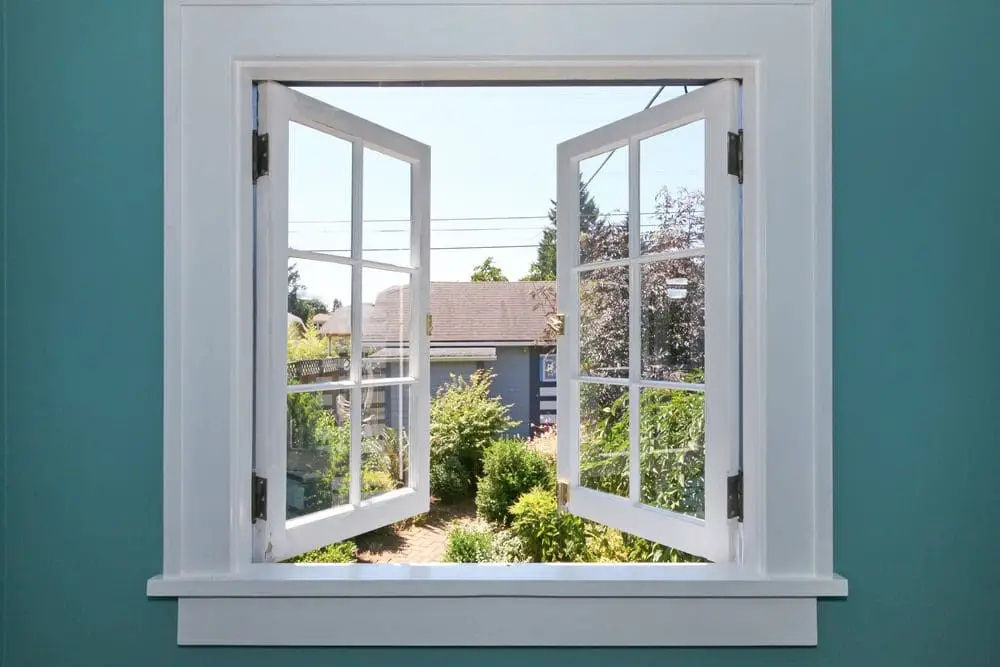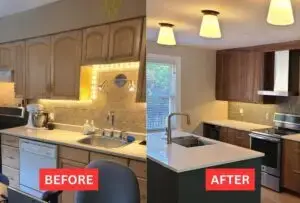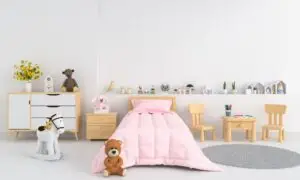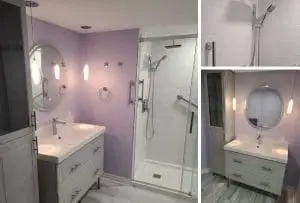Once your bathroom renovation is complete and your home looks stunning, you want to keep it looking in mint condition for as long as possible. These care and maintenance tips will extend the longevity of your bathroom renovation and help you avoid mold and mildew growth:
What are Mold & Mildew?
Mold and mildew are collections of small organisms (called spores) which thrive in wet and moist environments – like your bathroom. If you don’t clean your bathroom properly, mold spores start to grow and are eventually released into the air. You then inhale these spores into your lungs, which can be problematic for people with compromised immune systems or breathing conditions like asthma. Common health effects include difficulty breathing, coughing, sore throat, and headaches. Mold causes the most problems during the summertime – as it thrives in humidity. Yet, if the conditions are right, mold can wreak havoc in the winter as well. Mold and mildew will contaminate your indoor air quality. If you’ve been having trouble breathing inside – mold may be the culprit. Beyond coughing and wheezing, extreme cases can cause neurological issues and even death. That’s why every homeowner needs to take mold seriously. It’s crucial to know how mold forms and where it can pop up. That will help you prevent mold from forming in the first place, which is always the best solution. Once mold shows up, it can be challenging to get rid of entirely.What’s the Difference Between Mold and Mildew?
While mold and mildew are both forms of fungi – there are subtle differences. For one, mold is a prevalent component in household dust. Mildew, on the other hand, tends to grow on flat surfaces. It appears on organic materials, such as paper, leather, wood, walls, and ceilings. The two also differ in appearance and odor. Mold tends to be black, blue, red, or green. It also has a notoriously slimy texture and can at times contain fuzz. Mildew starts off as white – distinguishing it from mold. In its later stages, it starts to turn shades of yellow and brown. Instead of slime or fuzz, it’s very powdery in texture. Both require organic material in order to form. It’s what serves as a food source for fungal growth. That’s why mold and mildew always form on materials such as wood, leather, paper, and textiles. You can tell the two apart by their smell. Mildew’s odor is pretty mild and smells musty. It’s often compared to damp laundry that hasn’t dried. Mold’s odor is a lot more pungent and powerful. That’s because as the mold continues to grow, it forms microbial volatile organic compounds or MVOCs. The final distinction is mildew forms on surfaces while mold burrows underneath. So if you see fungal growth on the surface of your cabinets, that’s a dead giveaway that it’s mildew. Mold always forms beneath the surface – inside walls and in crevices and holes. That makes mold harder to locate – which can lead to it growing out of control.The Conditions Where Mold and Mildew Thrive
Any time there’s high heat, a food source (organic material), and a fair amount of humidity – mold, and mildew can form. For this reason, June through August are the most problematic months. It would be best if you kept a close eye on your walls, ceilings, and underneath sinks during these months. Yet, if you’re running your heat in the winter and there’s humidity – mold and mildew can form then, too. If temperatures are between 77° and 87°, and humidity is between 62 and 93 percent, you’re in the danger zone. Bear that in mind whenever you’re inspecting your home for mold and mildew. Here’s a list of the most common molds that show up in homes:- Alternaria
- Aspergillus
- Chaetomium
- Cladosporium
- Fusarium
Areas to Check for Mold & Mildew in Your Home
You’ll need to know where to look for mold and mildew in your Ottawa home. Otherwise, you won’t even know that you have a mold problem. That’s the last thing you want, as out-of-control mold can do some severe damage to your home. Not only that but eliminating it will be a costly endeavor. The best thing you can do is regularly inspect your home to prevent its formation. Here are the most problematic areas you should check during hot/humid months:- Your ventilation ductwork
- The area surrounding your HVAC system
- Underneath sinks
- Areas around sinks and faucets in bathrooms and kitchens
- Tubs, showers, shower curtains
- Any area that sees a lot of moisture (i.e., cabinets next to the shower)
- Dishwashers and laundry machines
- The areas surrounding your dishwasher
- In and around your refrigerator
Mold Prevention Tips
All right, now it’s time to learn how to mold-proof your home. After all, that’s the best way to avoid all the headaches that go along with mold and mildew infestations. If you do your due diligence – you won’t have to worry about contending against mold or mildew. Here are our top tips for preventing mold and mildew from forming in your Ottawa home.Keep Your Humidity Levels Down
As stated before, mold and mildew thrive in humidity. If your home or apartment is especially humid – you can bet that mold and mildew are forming somewhere. Since we know that mold and mildew love humidity – an excellent prevention technique is to keep your humidity levels low. Specific activities will elevate the humidity in your home. In particular, anything that brings excessive moisture will add to the humidity. To prevent this from happening, you should ventilate during the following activities:- Cooking hot food (the steam generates humidity)
- Running a hot shower (steam)
- Using the bathroom
Let Fresh Air Help You
Unfortunately, our indoor environments are far more polluted than the outdoors. After all, there’s a reason why it’s called ‘fresh’ air. The good news is you can open your windows for some much-needed natural ventilation. Fresh air is also an excellent way to lower the carbon dioxide levels in your home. If your home has high carbon dioxide levels – you’ll start to notice adverse side effects. In particular, it will decrease the flow of oxygen to your brain. How long has it been since you’ve opened a window? If your home has been on lockdown for months – the chances are your carbon dioxide levels are high. You can remedy that by opening a window every day for at least 15 minutes. Beyond lowering carbon dioxide, fresh air is a great way to prevent mold, too. Fresh air will dehumidify and dry out damp areas in your home. It will also reduce odors and get rid of stuffiness. If you’re tired of feeling stuffed up – try opening your windows. It may surprise you how good it makes the air feel in your house.Remove All Excess Moisture
A great way to stop mold from forming is to regularly dry areas that get wet. It’s common for homeowners to clean surfaces but neglect drying them. Yet, that’s the most crucial step if you want to prevent mold. That’s why you need to get into the habit of drying certain areas in your home – especially the bathroom. After you take a shower, a large portion of your bathroom will contain moisture. That includes not only the inside of the shower and tub – but also the sink and cabinets. As soon as you get out of the shower, dry everything with a clean towel. That’s one of the most reliable ways to ensure that mold never gets a chance to form. Beyond the bathroom, there are other areas that you should dry off, too. It’s common for A/C units to form moisture on the surface. Whenever you have wet clothes or bath towels out – don’t let them stay out for too long. Either stick them in the dryer or hang them up to dry. If you keep them on surfaces or bundled together – mold and mildew can form relatively quickly. Leaks are another cause for concern. If you have a leaky sink or pipe – it could spell disaster for your home. All it takes is one moist spot for mold to start forming. If you notice a leak or damp spot on your carpet, you need to clean and dry it within 24 hours. Otherwise, mold/mildew may have already started to form. Here are a few more tips for removing excess moisture around your home:- Clean, dry, and repair all gutters and spout systems. If you have wet gutters, mildew can form quite quickly. Also, check your sprinkler heads and downspout systems.
- Seal all window and foundation leaks. All it takes is one leaky window for rainwater to get in your home and start forming mold.
- Install a basement sump pump. A reliable way to keep your basement high and dry is to use a sump pump. It’s a pit that will remove all water that forms in your basement.
Our Suggested Daily Routine
- If possible, always leave a window open when showering or bathing. This will allow hot damp air to exit your home instead of building up as condensation on the walls of your bathroom.
- Turn on an exhaust fan prior to showering, and leave it on for at least 15 minutes following your shower. This will suck up some moisture instead of allowing it to fall on the floors or settle on the walls of the bathroom.
- After showering or bathing, rinse the walls, floors, and other wet surfaces with clean water. Pat all surfaces try with a towel after showering.
- Use a squeegee to wipe down the shower glass door after showering.
- Always leave shower doors and bath curtains open after a bath or shower to allow moisture to dissipate.
- Hang up towels and allow them to air dry. If they are just stuffed into a laundry hamper or left in a heap on the floor, they may not dry properly.
Weekly Routine
- Wash and dry your bath mats on a regular basis.
- Use special cleaning products specifically designed to remove mold and mildew.
Regular Inspections
- Inspect the caulking around your shower and tub and make sure there are no leaks. If so, it’s important to get them repaired right away before the water has a chance to seep behind the walls.
- Make sure exhaust fans are vented toward the outside, not just rerouting moist air into your attic.
